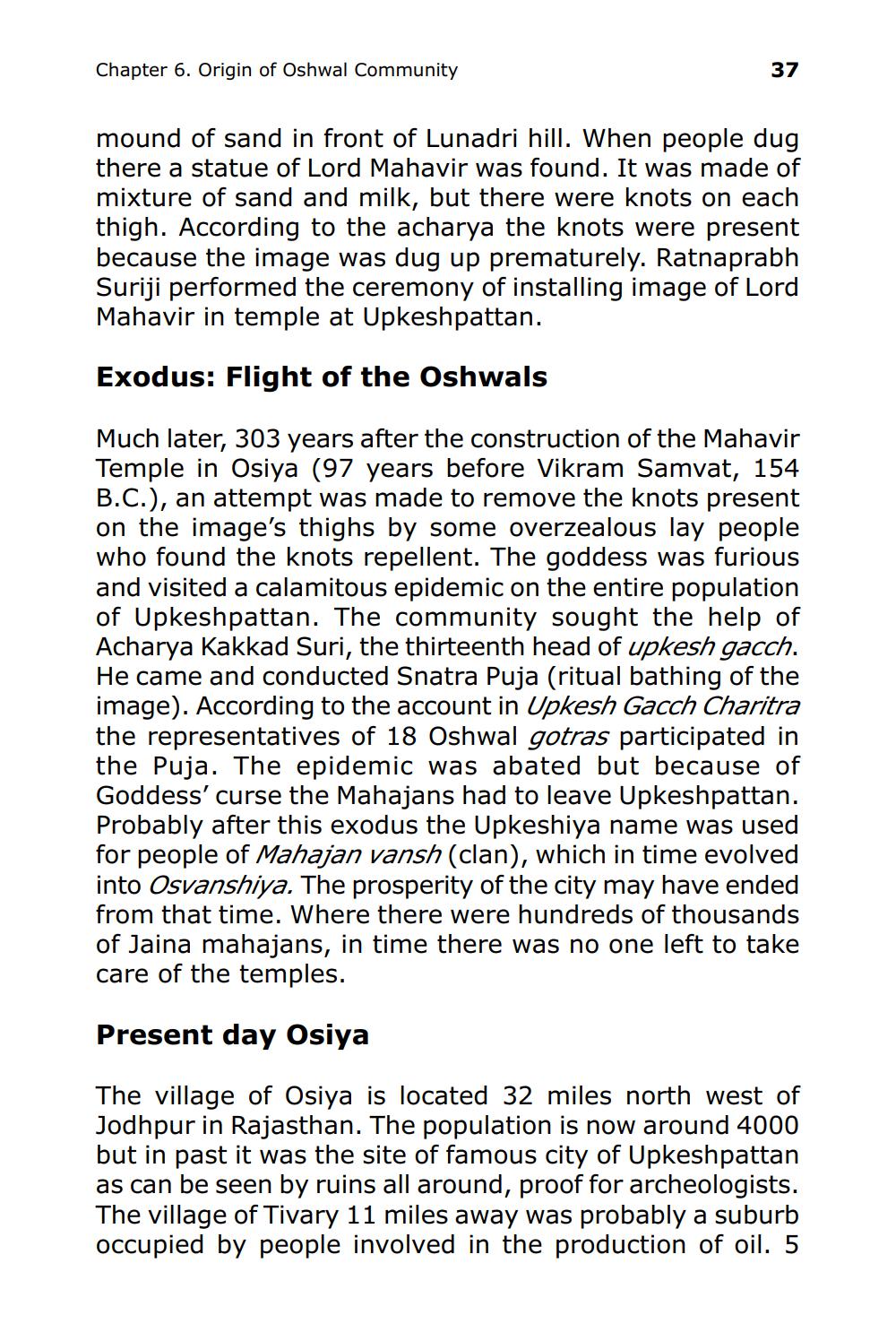________________
Chapter 6. Origin of Oshwal Community
37
mound of sand in front of Lunadri hill. When people dug there a statue of Lord Mahavir was found. It was made of mixture of sand and milk, but there were knots on each thigh. According to the acharya the knots were present because the image was dug up prematurely. Ratnaprabh Suriji performed the ceremony of installing image of Lord Mahavir in temple at Upkeshpattan.
Exodus: Flight of the Oshwals
Much later, 303 years after the construction of the Mahavir Temple in Osiya (97 years before Vikram Samvat, 154 B.C.), an attempt was made to remove the knots present on the image's thighs by some overzealous lay people who found the knots repellent. The goddess was furious and visited a calamitous epidemic on the entire population of Upkeshpattan. The community sought the help of Acharya Kakkad Suri, the thirteenth head of upkesh gacch. He came and conducted Snatra Puja (ritual bathing of the image). According to the account in Upkesh Gacch Charitra the representatives of 18 Oshwal gotras participated in the Puja. The epidemic was abated but because of Goddess' curse the Mahajans had to leave Upkeshpattan. Probably after this exodus the Upkeshiya name was used for people of Mahajan vansh (clan), which in time evolved into Osvanshiya. The prosperity of the city may have ended from that time. Where there were hundreds of thousands of Jaina mahajans, in time there was no one left to take care of the temples.
Present day Osiya
The village of Osiya is located 32 miles north west of Jodhpur in Rajasthan. The population is now around 4000 but in past it was the site of famous city of Upkeshpattan as can be seen by ruins all around, proof for archeologists. The village of Tivary 11 miles away was probably a suburb occupied by people involved in the production of oil. 5




